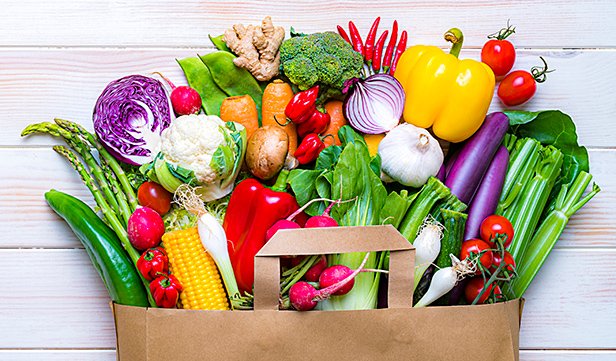How to Incorporate More Fruits and Vegetables into Your Daily Diet

Incorporating more fruits and vegetables into your daily diet can seem like a daunting task, especially with the hustle and bustle of modern life. However, the benefits of a diet rich in these foods are immense, ranging from improved digestion to a supported immune system. Fortunately, with a few simple strategies, you can effortlessly increase your intake of these nutritious foods without feeling overwhelmed. This guide will walk you through practical tips that can help make fruits and vegetables a regular part of your meals.
Start with Breakfast
Breakfast is the perfect time to sneak in some extra fruits and vegetables. For example, you can add a handful of berries to your morning cereal or yogurt. If you’re a fan of smoothies, blend in a mix of spinach, kale, or carrots with your favorite fruits for a nutrient-packed start to your day. Even if you prefer a savory breakfast, adding vegetables like tomatoes, mushrooms, or spinach to your omelet or scrambled eggs can make a significant difference. By making these small changes, you’ll kickstart your day with a supportive dose of vitamins and minerals.
Make Fruits and Vegetables Convenient
One of the main reasons people don’t eat enough fruits and vegetables is convenience. If healthy options are not readily available, it’s easy to reach for less nutritious snacks. To combat this, keep pre-cut fruits and vegetables in your fridge for easy snacking. Carrot sticks, apple slices, and bell pepper strips can be prepared ahead of time and stored in containers for quick access. Additionally, consider placing a bowl of fresh fruits on your kitchen counter or dining table. When healthy snacks are within arm’s reach, you’re more likely to grab them.
Incorporate Vegetables into Every Meal
It’s easier than you might think to add vegetables to every meal. Start by bulking up your main dishes with extra veggies. For instance, you can toss spinach or zucchini into your pasta, add extra vegetables to your stir-fry, or layer your sandwiches with lettuce, tomato, and cucumber. If you’re making soups or stews, throw in some additional carrots, celery, or beans. These small additions can increase your vegetable intake significantly without altering the flavor of your dishes.
Experiment with New Recipes
Trying out new recipes can make eating fruits and vegetables more exciting. There are countless creative ways to prepare these foods that go beyond the usual salads and side dishes. For example, you could try roasting a variety of vegetables with different herbs and spices, making a fruit salsa to serve with grilled chicken, or preparing a vegetable-packed stir-fry with a homemade sauce. By exploring new recipes, you can discover flavors and combinations that you enjoy, making it easier to stick to a diet rich in fruits and vegetables.
Replace Unhealthy Snacks
Snacking is often where many people consume excess calories and unhealthy fats. However, by replacing chips, cookies, or candy with fruits and vegetables, you can satisfy your cravings while also improving your diet. Instead of reaching for a bag of chips, try munching on carrot sticks, cucumber slices, or cherry tomatoes. If you’re craving something sweet, a piece of fruit can be a satisfying alternative. Over time, you may find that your taste preferences shift, and you start to crave these healthier options instead.
Incorporate Fruits into Desserts
Desserts don’t have to be completely off-limits when trying to eat healthier. In fact, fruits can make delicious and satisfying desserts. You can create fruit-based desserts, such as baked apples, berry parfaits, or a simple fruit salad with a drizzle of honey. These desserts not only satisfy your sweet tooth but also provide a serving of fruit. Additionally, using fruits in desserts can help you gradually reduce your sugar intake, as the natural sweetness of fruits often means you need less added sugar.
Small Changes, Big Impact
Incorporating more fruits and vegetables into your daily diet doesn’t require drastic changes. By making small, manageable adjustments to your meals and snacks, you can gradually increase your intake of these nutritious foods. Whether it’s adding vegetables to your breakfast, keeping fruits handy for snacking, or experimenting with new recipes, every little bit helps. Supplementing your diet with products like Cellsentials, which supports general health maintenance and well-being, can also be a great addition alongside increasing your fruit and vegetable intake. Over time, these small changes can lead to a healthy diet and a well maintained quality of life. Start today, and enjoy the benefits that come with a diet rich in fruits and vegetables.






